Less water doesn’t mean a boring garden. Here are 5 tips for a beautiful, dry climate garden that saves water.

Less water doesn’t mean a boring garden. Here are 5 tips for a beautiful, dry climate garden that saves water.

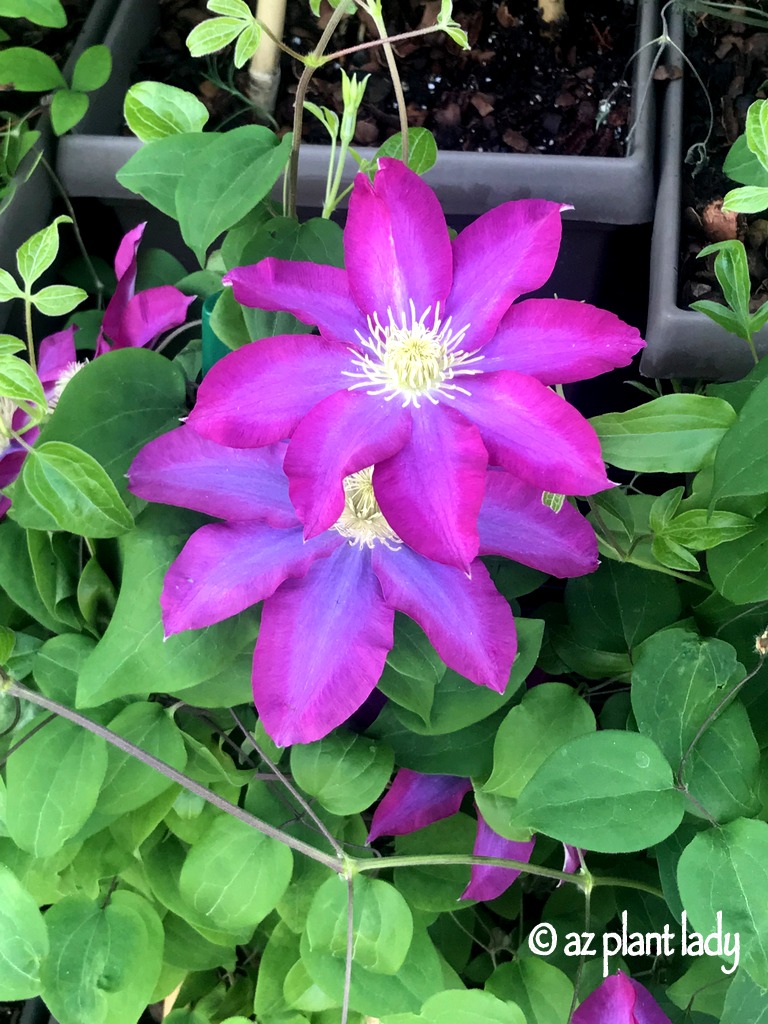
Lovely clematis flowers
Clematis flowers are so pretty. Do you ever find yourself transfixed by a pretty face flower? I have. In fact, I’ve rarely seen a flower that I didn’t like. However, sometimes a pretty face, or in this case, a flower, can easily fool us.
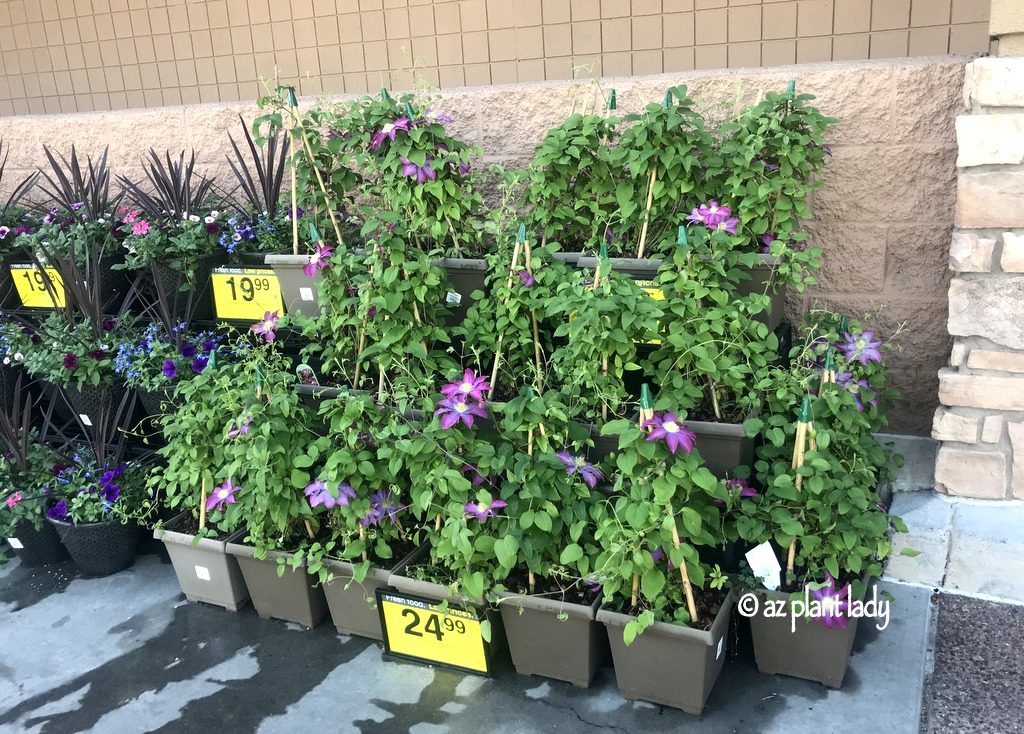
Over the weekend, I made a quick trip to my local grocery store where I noticed a display of beautiful flowering plants that stopped me dead in my tracks.
Right by the entry was a collection of lovely clematis vines. Their lush green foliage and large purple flowers were gorgeous and enticed passersby into taking one home.
This made me mad, and I don’t get angry quickly. So, why am I upset? It’s not because I have anything against clematis – I think that they are lovely and have taken some photos of them throughout my garden travels including these below.
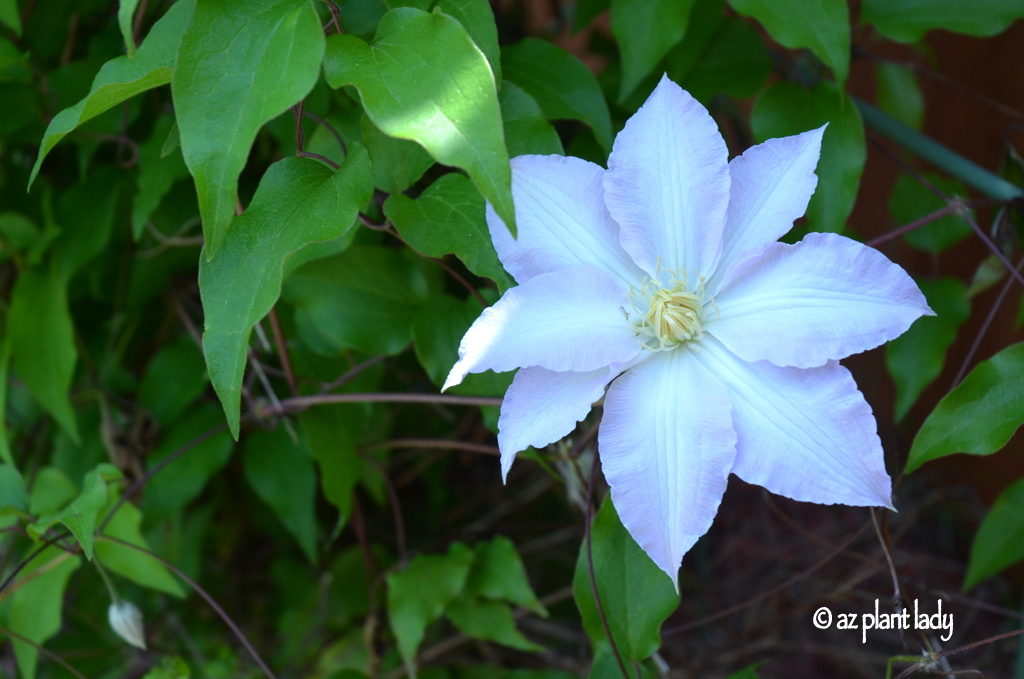
Minneapolis, Minnesota
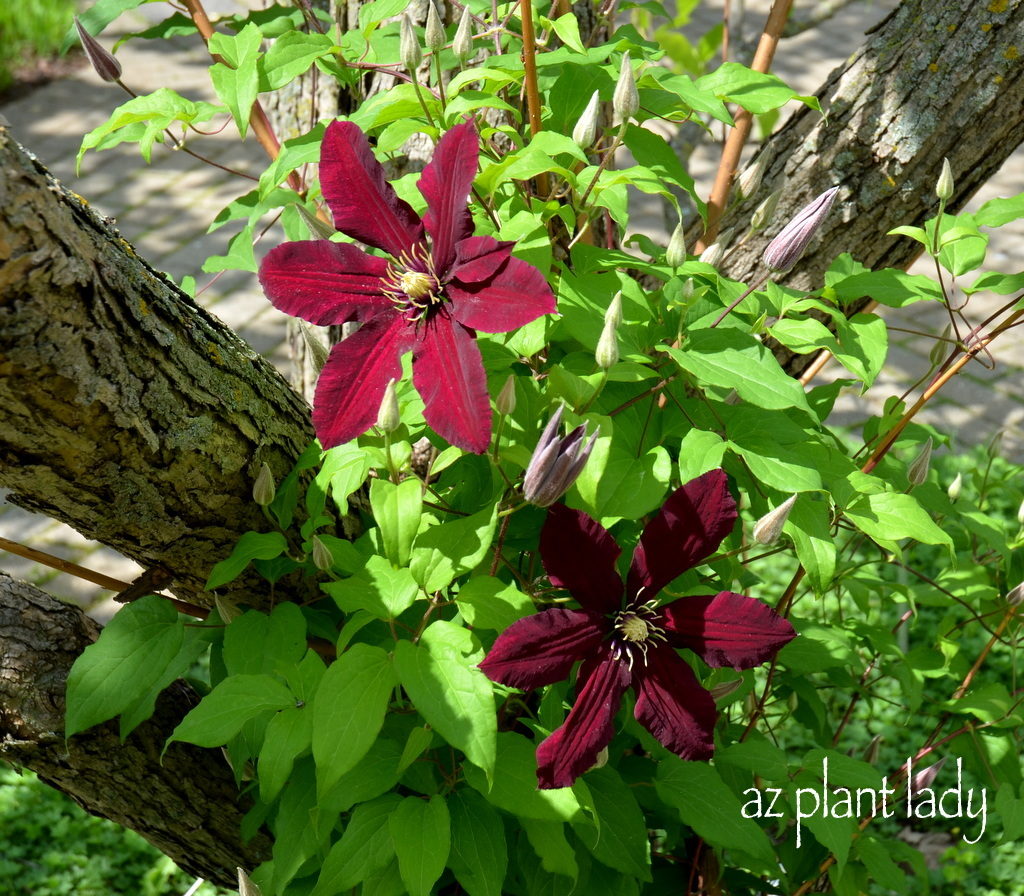
Olbrich Gardens, Wisconsin
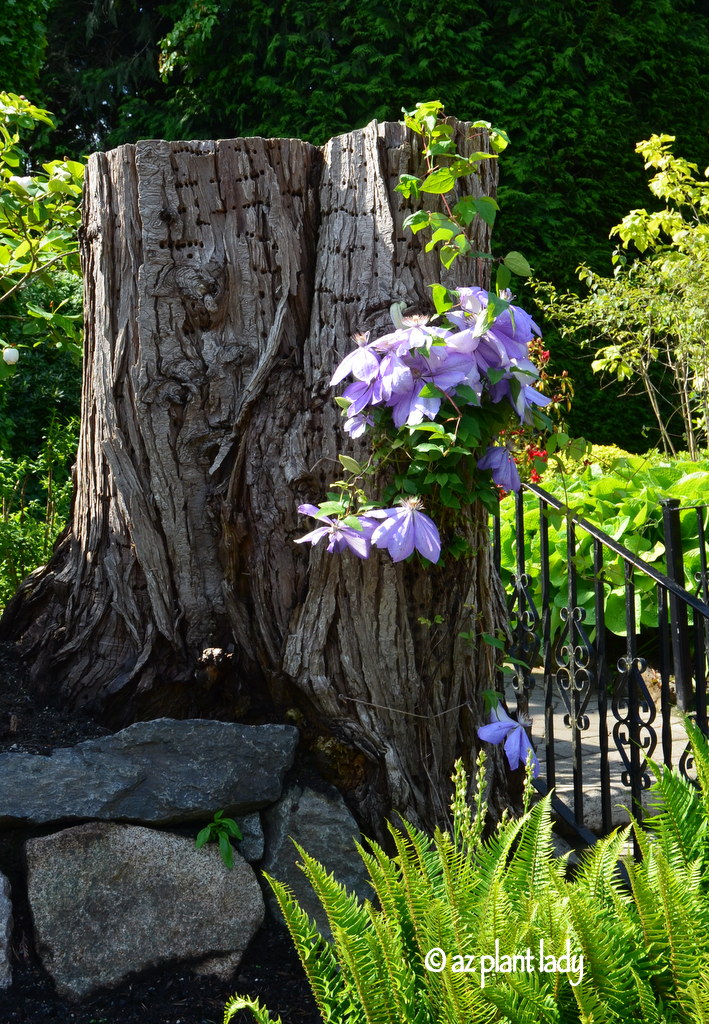
Butchart Gardens, in British Columbia, Canada
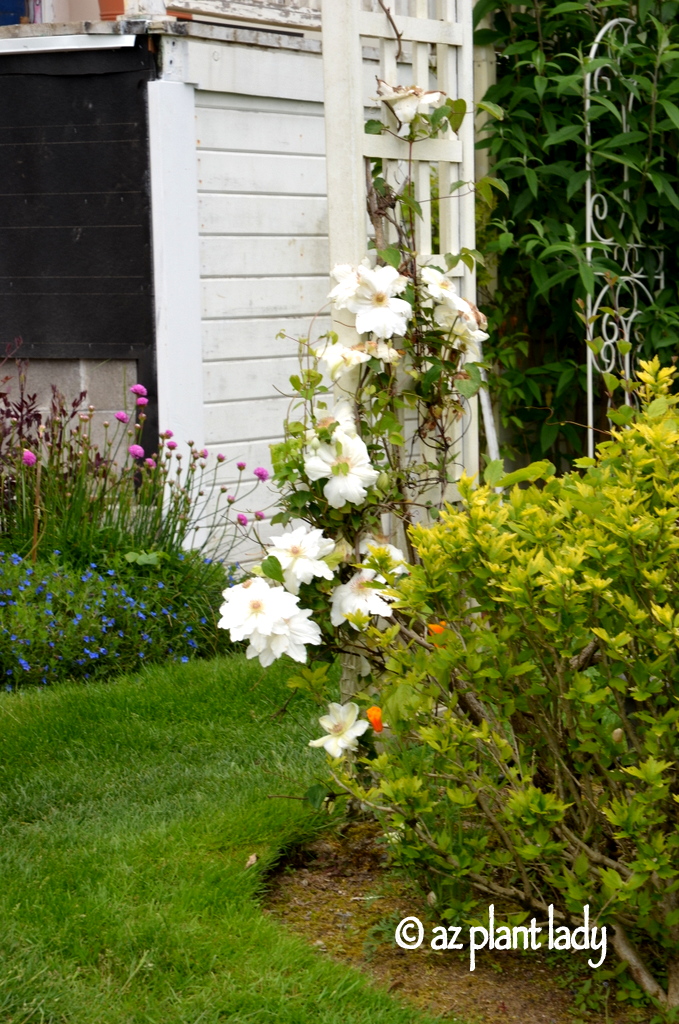
Astoria, Oregon
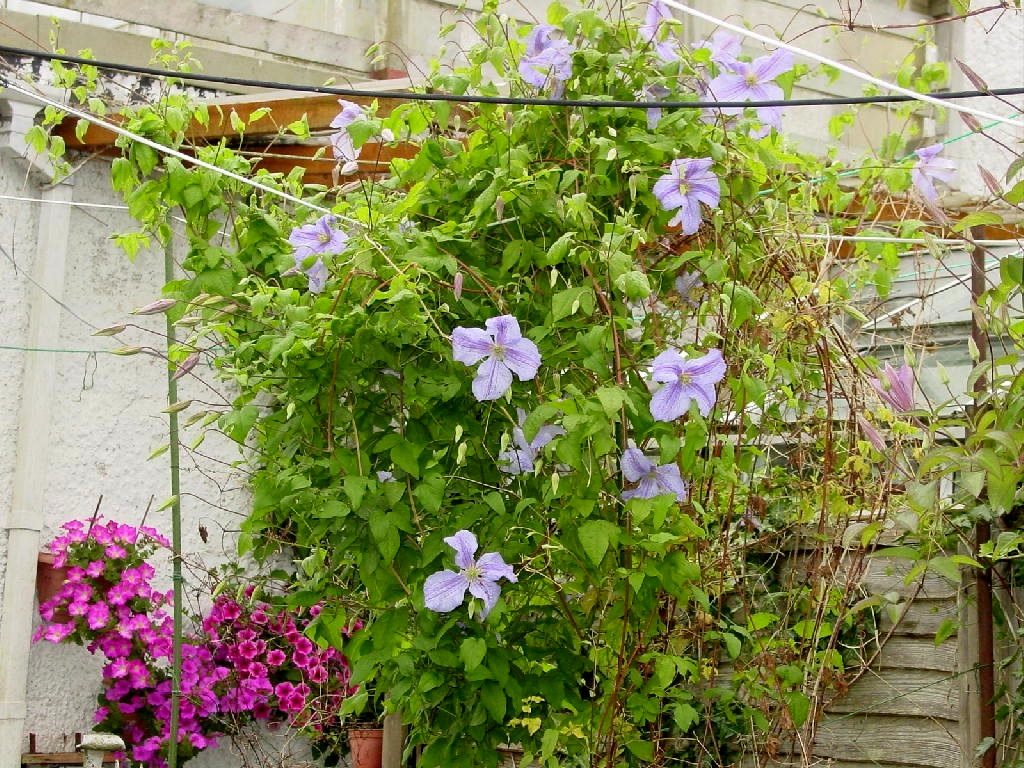
Aberyswyth, Wales
If you have paid attention to where I took the pictures of clematis, you may begin to understand why seeing this outside my Phoenix area grocery store upset me. The reason is that clematis don’t thrive in a low desert climate. They need extensive irrigation and attention.
The problem is, the average person doesn’t know this and envision how nice the clematis will look in their garden, so they hand over $25 and carry their new plant home with the assumption that the store wouldn’t sell plants that very difficult to grow in their area.
Sadly, they are wrong. Unless they possess extensive gardening experience and knowledge about clematis, they will end up with a vine that barely clings to life within a few weeks and will blame themselves for its condition.
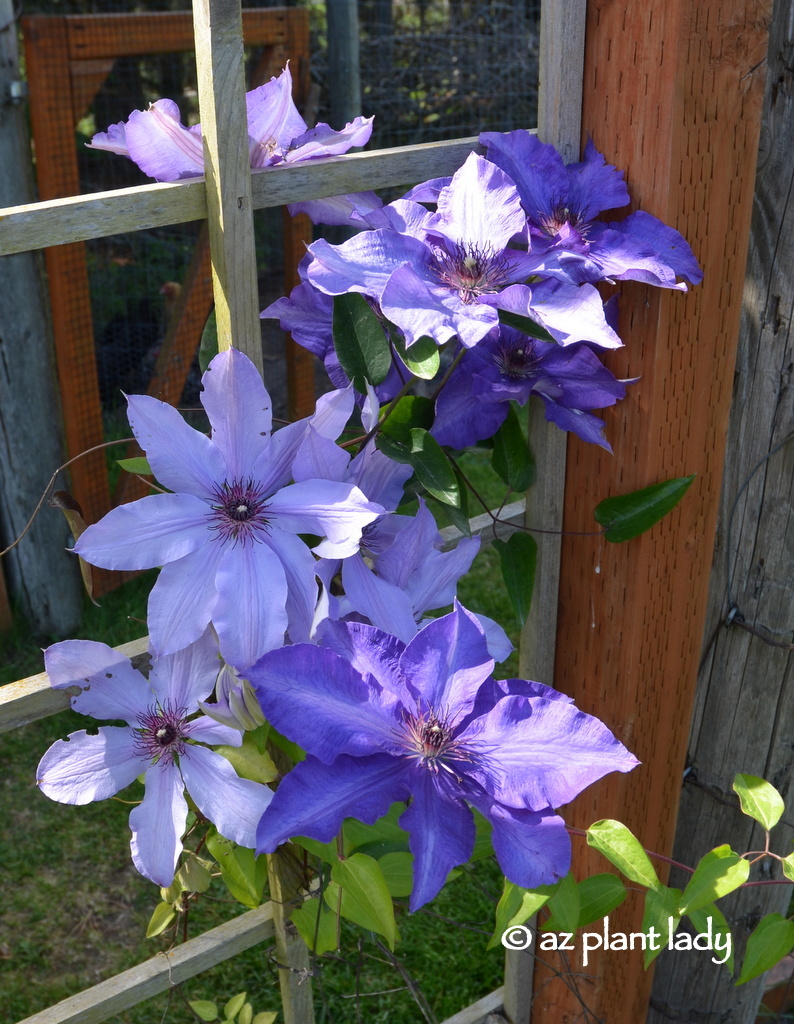
Sequim, Washington
The moral of this story? Don’t be fooled by a pretty face clematis flower. Avoid impulse buys and research before buying plants for your garden. If you see a plant that you have never seen before, there is a greater chance that it may have difficulty growing in your climate. Choose a desert adapted vine instead.
For information on how to choose the right plants for your garden, I invite you to read my post, 5 Tips for Choosing Plants From the Nursery.

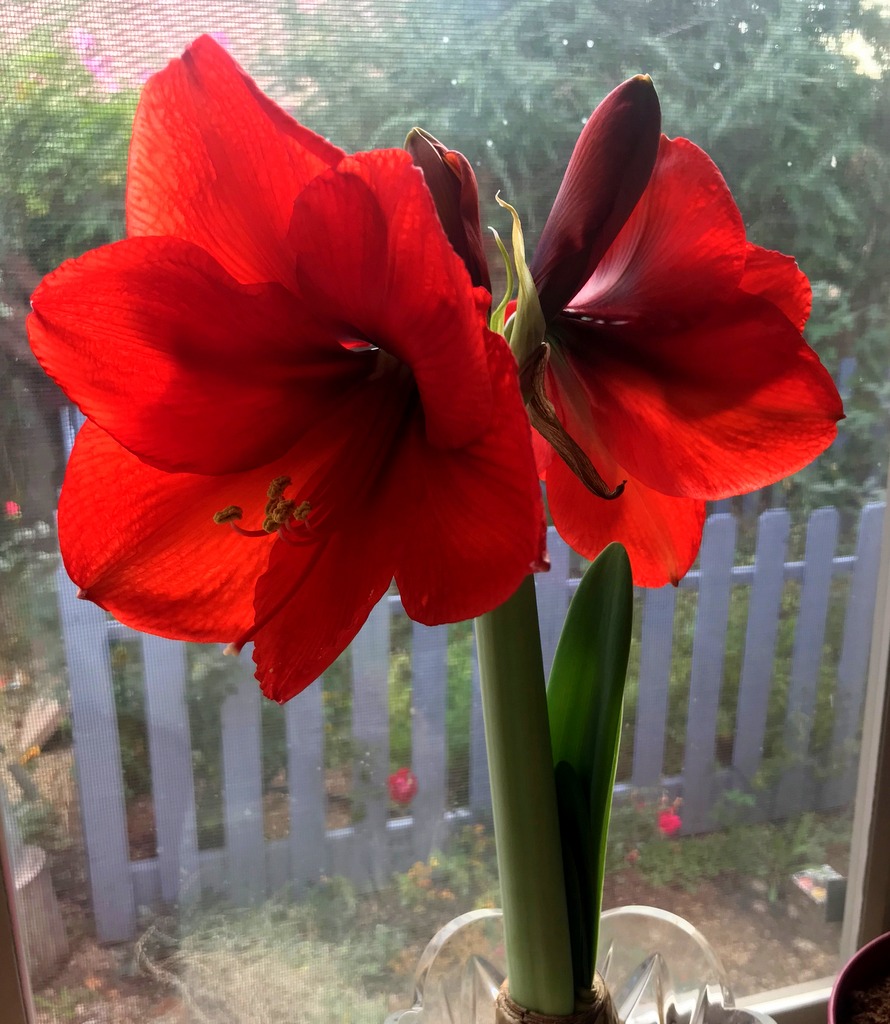
*This blog post contains affiliate links, to make it easier for you to order supplies for growing amaryllis outside. If you click through and make a purchase, I may receive a commission (at no additional cost to you).
Have you ever wondered what to do with your amaryllis once the flowers have faded? Instead of throwing it out, you can plant it outdoors, where it will bloom year to year, even if you live in the Desert Southwest.
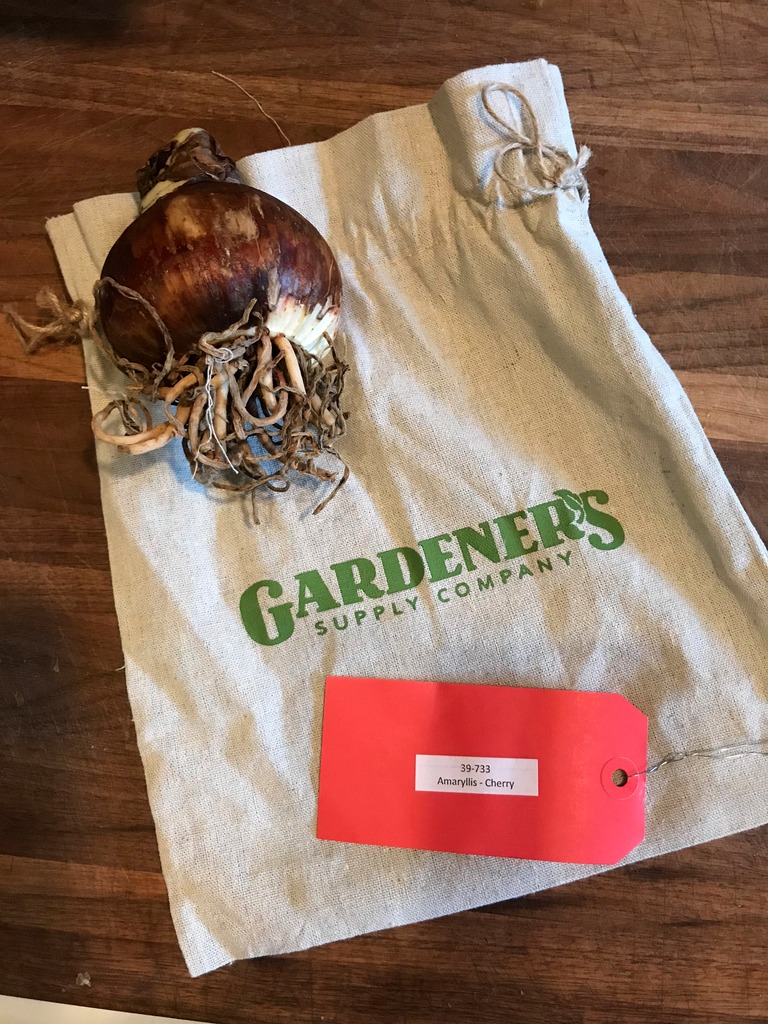
Around the holiday season, amaryllis bulbs can be purchased in most grocery stores, nurseries, or online.
I have been enjoying the beautiful blooms of my amaryllis this holiday season and am grateful for the vibrant splash of color on my kitchen windowsill. Soon, the flowers will fade, and I will get it ready to transplant outside.
Here is how to do it:
1. Cut off the faded flower, but keep the stem and leaves, which will continue to produce food for the amaryllis bulbs. Don’t worry if the stem oozes sap after cutting, this is normal. Once the stem and leaves turn yellow and die, cut them off.
2. Select an area out in the garden for your amaryllis. They will require an area that gets filtered shade or a few hours of the morning sun. It should have fertile garden soil, which can be provided by amending with potting soil. If you have a flower bed or vegetable garden, you can plant the amaryllis in there, OR you can plant it in a container – I love this blue one.
3. Once the danger of freezing temperatures has passed, it’s time to plant. At the bottom of the planting hole, add some bulb fertilizer, following package directions. In desert climates, it’s important to bury the bulb to the top, so that only a 1/2 inch remains above the soil. New leaves will soon emerge that will add a pretty element to the garden.
4. Whenever leafy growth is present, water when the top inch of soil is dry and fertilize monthly using an all-purpose liquid fertilizer at 1/2 the recommended strength.
5. Amaryllis typically bloom in spring when grown outdoors. After the blooms fade, remove them and allow the leaves to remain until they turn yellow and die. At this point, add a layer of mulch, leaving only a 1/2 inch peeking above the soil. Decrease the watering so that soil remains just slightly moist.
So, in a nutshell, water and fertilize when they are blooming, or leaves are growing, cut off leaves when they are dead – stop fertilizing and decrease watering.
It’s easy to see why amaryllis are a favorite flower when grown indoors and even more so if you plant them outdoors for those of us who live in the Desert Southwest.
Have you ever grown an amaryllis outside?
*Gardeners Supply provided with this amaryllis free of charge for my review.

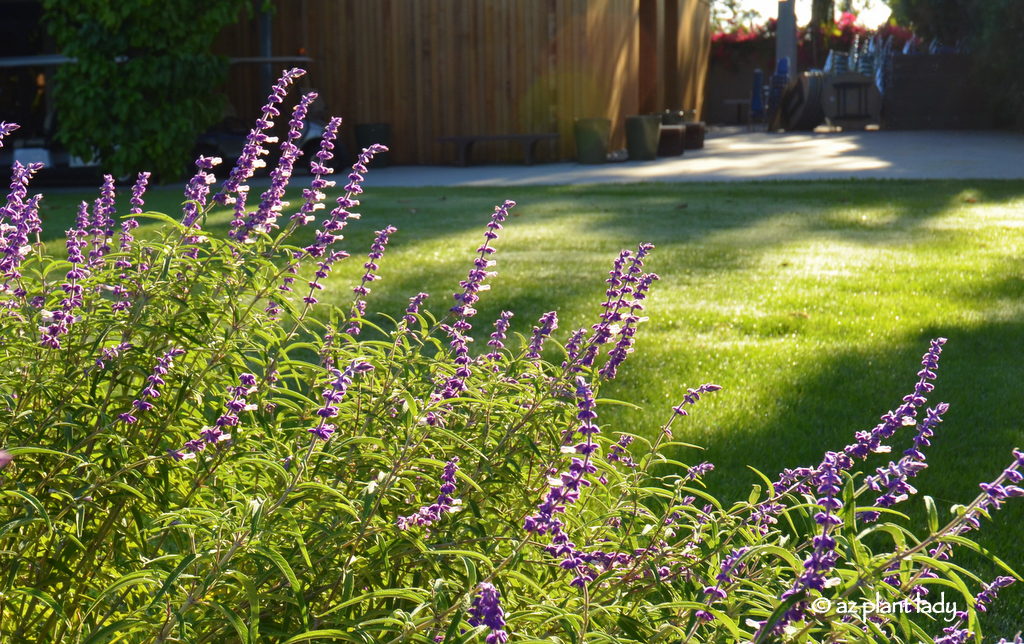
Fall Blooming Shrubs, Mexican Bush Sage (Salvia leucantha)
Summer temperatures are fading and it’s time to get back outdoors and enjoy the beauty surrounding our homes. When many plants begin to slow down blooming, there are some that are just getting started including these fall-blooming shrubs.
This time of year is very busy for me as many of my clients are ready to focus on their garden. However, as busy as I get, I try to find some time to sit outside and enjoy the colorful plants in my own garden.
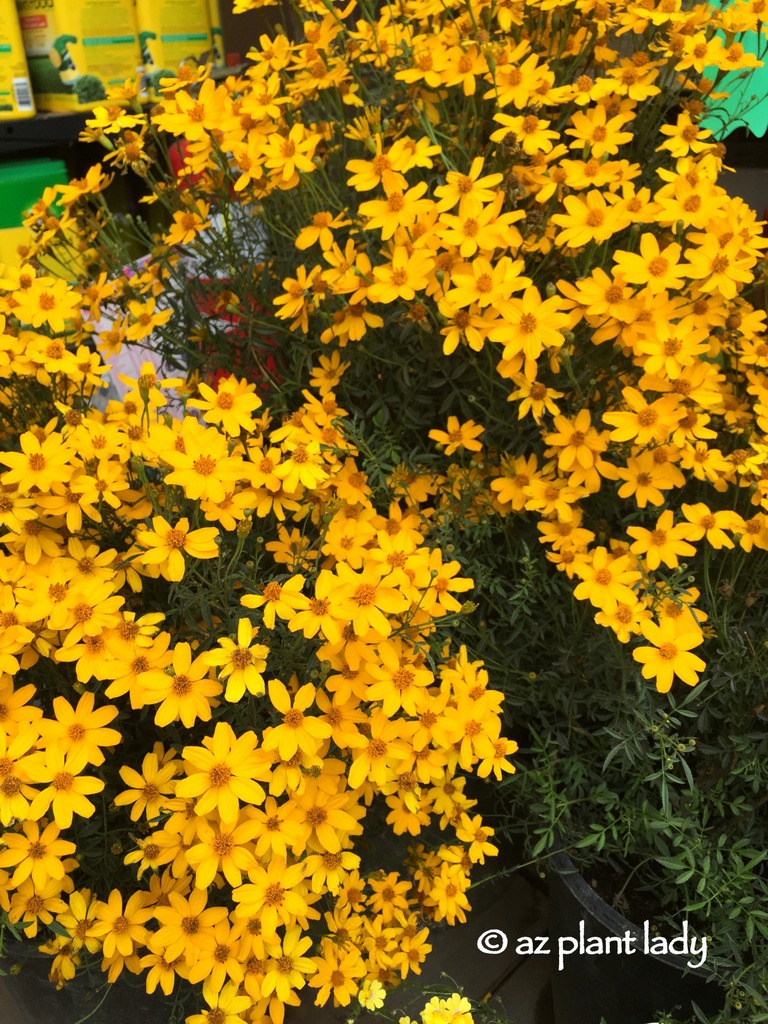
Mt. Lemmon Marigold (Tagetes lemmonii)
Fall is the best time for adding new plants to the landscape, so this is a great time to take a look at your garden and see where you would like to see some welcome autumn color.
If you are ready to add more color to your outdoor space this autumn, I invite you to read my latest article for Houzz where I list my favorite flowering shrubs in the fall garden.
10 Fall-Blooming Shrubs for Southwest Gardens
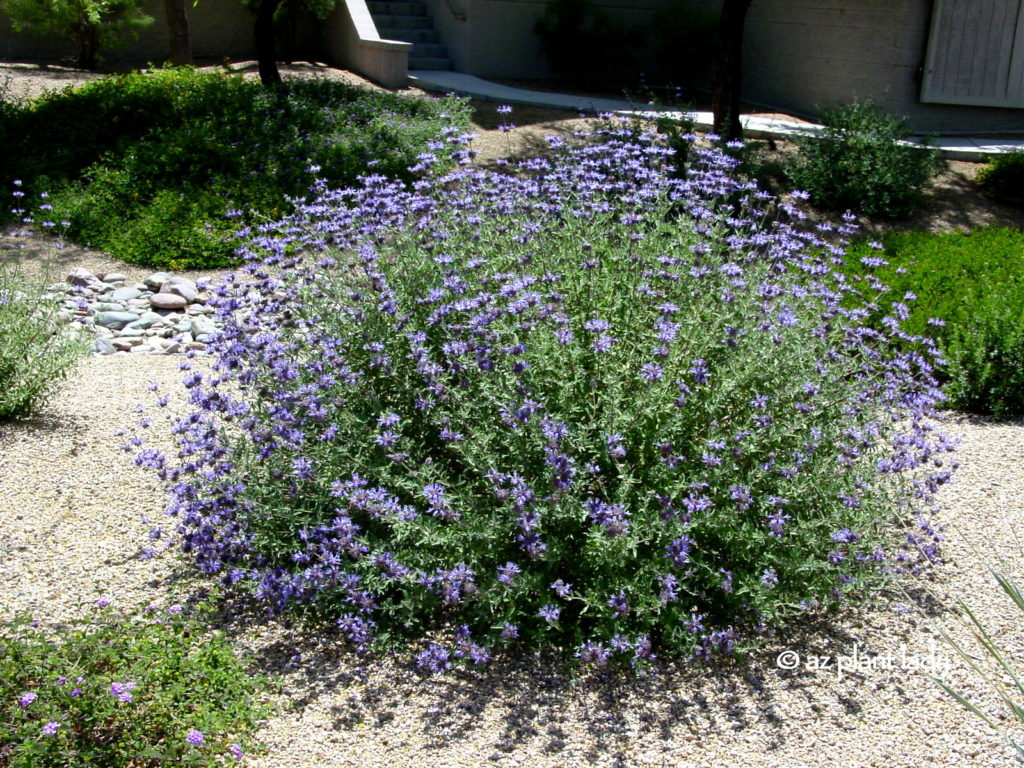
Chaparral Sage (Salvia clevelandii)
Do you love purple flowers? Check out my blog post
where I feature autumn bloomers with purple flowers.
What is your favorite flowering plant for fall?

I promise not to sell or share your email with anyone ever!
*Please note that I cannot answer individual gardening questions.
*As an Amazon Associate I earn from qualifying purchases.
| Cookie | Duration | Description |
|---|---|---|
| cookielawinfo-checkbox-analytics | 11 months | This cookie is set by GDPR Cookie Consent plugin. The cookie is used to store the user consent for the cookies in the category "Analytics". |
| cookielawinfo-checkbox-functional | 11 months | The cookie is set by GDPR cookie consent to record the user consent for the cookies in the category "Functional". |
| cookielawinfo-checkbox-necessary | 11 months | This cookie is set by GDPR Cookie Consent plugin. The cookies is used to store the user consent for the cookies in the category "Necessary". |
| cookielawinfo-checkbox-others | 11 months | This cookie is set by GDPR Cookie Consent plugin. The cookie is used to store the user consent for the cookies in the category "Other. |
| cookielawinfo-checkbox-performance | 11 months | This cookie is set by GDPR Cookie Consent plugin. The cookie is used to store the user consent for the cookies in the category "Performance". |
| viewed_cookie_policy | 11 months | The cookie is set by the GDPR Cookie Consent plugin and is used to store whether or not user has consented to the use of cookies. It does not store any personal data. |
